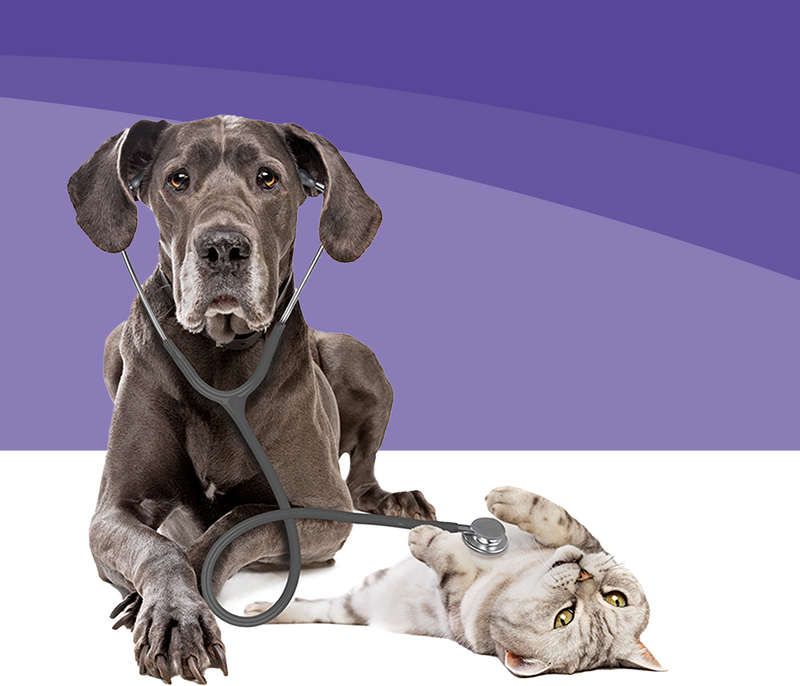Hello pet parents,
Is your dog struggling to empty its bladder? If your dog is suffering from neurological issues, it often becomes difficult for it to urinate. The nervous system of a dog contains the spinal cord, nerves, and the brain, keeping the bladder healthy. If the nervous system is paralyzed for genetic or other reasons, a dog loses the ability to urinate independently.
A dog that is paralyzed needs regular bladder expression to prevent further problems. If it spends 8 hours without expressing, it can increase the risk of urinary tract infections. Instead of getting panicked, it would be better to deal with it calmly and carefully.
At Pad Home Pet Services, we deeply understand how overwhelming this can be for both you and your dog. A paralyzed dog requires regular bladder expression to avoid serious health issues, such as urinary tract infections, which can occur if bladder expression is neglected. In the blog, we explain how our compassionate and experienced team can provide the best services your dog deserves.
Key Takeaway
-
Dogs need supervised bladder expression if they have neurological problems.
-
Having a calm dog and a calm environment makes the process easier.
-
If your dog has neurological issues, spinal injuries, or has had surgery, bladder expression may be needed to prevent UTIs, bladder stones, and other complications.
What Is Bladder Expression and Why Is It Important?
Bladder expression is a technique used to manually empty the bladder of your dog when they are unable to do so on their own. If your dog has neurological issues, spinal injuries, or has undergone surgery, they may need bladder expression to avoid urinary tract infections (UTIs), bladder stones, and other complications. Pets with spinal cord injuries need to be expressed every six hours. The dog may need to urinate after a certain amount of time.
How to Express a Dog's Bladder: Pad Home Pet Service’s Way
It's crucial to seek help when your pet is struggling with urination, and Pad Home Pet Services is here to provide the support and guidance you need, ensuring your pet gets the care it deserves.
Expressing Your Dog: Before You Start (veterinary guidance first)
-
If your pet has urinary incontinence or IVDD (disc disease), ask your veterinary team to show you the technique first. Many dogs lose control permanently due to disease or aging; a hands-on demo helps you get the hang of it and protects the bladder.
-
We can create a personalized bladder expression schedule, typically every 6–8 hours, as many dogs require more frequent expressing to stay comfortable and healthy.
-
Call your vet if your pet resists, cries, or if urine comes out with blood or a strong odor.
For a Paralyzed Dog or Pets with IVDD
Dogs with paralysis or disc disease often need help to pee. A supportive sling, walking harness, or towel under the belly can stabilize the abdomen while we work. We ensure that the expression sessions are kept calm and unhurried so your pet can relax and let the bladder release.
Positioning a Male Dog (and Small vs. Large Dogs)
Small Dogs: We position your dog on their side, using a towel or pad for support to ensure a comfortable and controlled process.
Large or Male Dogs: We keep your dog standing, gently steadying the chest with our left hand while supporting the abdomen with our right. A belly sling can also be used to minimize dribbling and reduce squirming during the process.
How to Locate the Bladder
-
Location: The bladder is located in the lower abdomen, just in front of the pelvis.
-
Finding It: We start behind the ribcage and gently move fingertips toward the hind legs. The bladder feels like a smooth, round "water balloon."
-
Positioning: We place both hands with the thumbs pointing toward each other (or upward if your dog is standing) for better control.
Urination: Gentle, Even Pressure
-
Our licenced and expert vet tech places both hands on either side of the bladder, applying slow, even pressure from both sides—no quick squeezing.
-
They hold the pressure for 10–20 seconds to encourage a steady stream, then release briefly before repeating.
-
As urine flows, they maintain a steady, calm hold. If the stream weakens, the vet will pause and reposition as needed.
-
Near the end, they will apply brief pulses of pressure for 3–6 seconds to help empty any remaining urine.
-
The signs we're done: The bladder will feel smaller and softer, the stream will stop, and only a light dribble will remain.
Rest assured. We ensure your dog is comfortable, and the process is done thoroughly.
Step-by-Step Setup Ensuring Comfort & Cleanliness
We ensure comfort and cleanliness during the bladder expression process with these steps:
-
We choose a quiet, non-slippery surface, such as a towel, pee pad, litter box, or even express from a counter into a sink or toilet.
-
We have wipes and a clean towel ready for any splashes or mess.
-
We stay calm. The dog mirrors the handler’s energy, so calmness helps the bladder to release smoothly.
We’ll take care of the setup, ensuring a clean and stress-free experience for your furry baby and for you, too.
Aftercare: Keeping the Bladder Healthy
We provide aftercare to keep your dog’s bladder healthy:
-
Gently clean your pet’s skin to prevent any irritation.
-
Track the times and volumes to learn when the bladder needs emptying.
-
Encourage hydration to support overall bladder health.
-
Reward your dog with praise and a treat for their patience during the process.
When to Call Your Veterinary Team (Don't Wait!)
Call your veterinary team immediately if you notice any of the following:
-
Straining, pain, or if you can't locate the bladder.
-
No urine in 8 hours, or signs of fever, lethargy, vomiting, or dribbling between sessions.
-
Urine with blood, a strong ammonia smell, or a very dark color.
-
Any changes after medication, or if your dog has lost the ability to control urination due to disease or aging.
Don't wait, as timely intervention can make a big difference in your dog’s health.
3 Common Mistakes to Avoid When Expressing Your Dog's Bladder
While expressing a steady stream of urine from your pet takes practice, you can rely on our expert pet services to guide you through the process. We are aware of the common mistakes that need to be avoided when expressing your dog’s bladder, ensuring your pet’s comfort and well-being every step of the way.
1. Using Too Much Pressure
Applying too much force can cause pain or discomfort for your dog. We know the right amount of pressure to use, ensuring your dog’s comfort and safety throughout the process.
2. Not Positioning Your Dog Properly
Incorrect positioning can make bladder expression less effective and increase stress for both the dog and the vet technician. Our team at Pad Home Pet Services will position your dog correctly, helping to create a calm and relaxed environment for successful bladder expression.
3. Skipping Regular Practice
Pad Home Pet Services offers continuous support and practical advice. We keep track of the sessions dedicatedly so we never miss one. It’s important for us to make sure that your dearest pet is recovering well with enough comfort.
How Pad Home Pet Services Can Help with In-Home Bladder Expression
We are a team of veterinarians who can help your pet dog with bladder expression. With our skilled veterinary technicians, we ensure that the process is safe, simple, and done with utmost care.
Our services are well known for two reasons:
Safe and Effective Bladder Expression
Our veterinary team uses a trusted bladder expression method to express the bladder when it's full—ideal for expressing your dog with urinary issues, incontinence, IVDD, or a paralyzed dog. We place your hands (or a fist) on the "water balloon" of the bladder and apply steady, gentle pressure for 10–20 seconds until urine is released.
We tailor the approach to your pet—different positions (side-lying or standing position), a towel or walk-in sling for stability, and pauses of six seconds before repositioning, depending on how much urine remains. If your dog has lost the ability to control urination or is at risk of losing control permanently due to disease or aging, our veterinary guidance helps get your dog comfortable, supports a healthy bladder routine, and reduces urine accidents.
In-Home Visits for Convenience
We come to you with step-by-step coaching on expressing your dog—how to place a hand, use your hands to express, and apply steady, gentle pressure so you can safely express the bladder at home. This routine can be done daily or as often as your pet needs to express, making recovery easier for everyone. Our mobile team helps with IVDD, urinary incontinence, and mobility challenges (walk-in support), ensuring you can get your dog to urinate comfortably and confidently. If you notice a delayed reaction, discomfort, or changes in stream, we adjust the plan and coordinate veterinary follow-up.
Frequently Asked Questions (FAQs)
Q: Will expressing my dog's bladder be appropriate even if they don't have a neurological condition?
A: Yes, dogs recovering from surgery or with weakened bladder control can also benefit from bladder expression services we offer, especially if they’re unable to urinate fully. Pad Home Pet Services is here to support you in this process, and it’s always best to consult your vet to confirm if it’s necessary for your dog.
Q: When should I consult a vet for bladder expression?
A: If you're unsure about how to express your dog’s bladder or if your dog experiences pain, straining, or difficulty urinating, it’s important to consult a vet. A professional can ensure the process is done safely and provide guidance tailored to your dog's specific needs.
Q: Is bladder expression a permanent solution, or will my dog need this daily?
A: Depending on the condition, some dogs will need bladder expression daily, while others may need it only during recovery or flare-ups. Your vet will provide a schedule based on your dog’s needs. However, it should not be left untreated.
Final Words
Ensuring your pet dog’s comfort and health is crucial, especially when dealing with neurological issues. While regular bladder expression is essential to prevent further problems, reaching out to professional pet services is the best option. Our skilled team can provide expert assistance, making the process safer, more efficient, and less stressful for both you and your dog.
Reach Out for Expert Guidance and Support
Contact Pad Home Pet Services today for bladder expression whenever you feel like your dog needs it. Our professional veterinary technicians are ready to take it into their hands and ensure your dog stays comfortable and healthy.
Call us at 347-767-7641 or visit our website to learn more!

